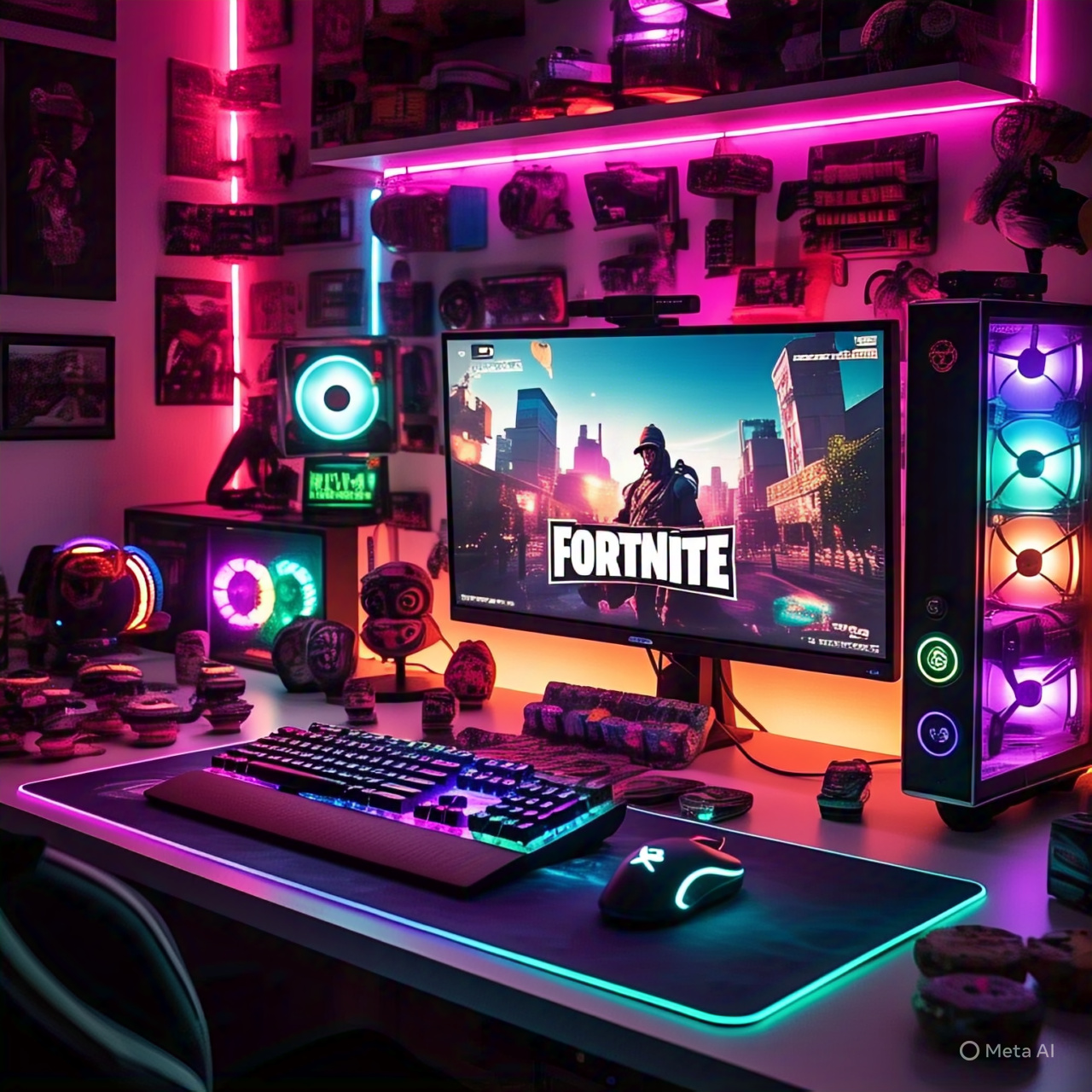
: An Easy Guide for Gamers
Fortnite is one of the most popular battle royale games worldwide, but not every player has access to high-end gaming rigs. If you own a low-end PC, you might worry about lag, stuttering, or poor graphics ruining your gameplay experience. Fortunately, with the right tweaks adn optimizations, you can play Fortnite smoothly even on modest hardware. This guide will walk you through everything you need to know to enjoy Fortnite on a low-end PC without breaking the bank.
Materials and Tools Needed
| Material/Tool | Description |
|---|---|
| Low-end PC | A computer with minimum or below-recommended specs (e.g., 4GB RAM, Intel HD Graphics, older CPU) |
| Fortnite Game Client | Installed via Epic Games Launcher, latest version recommended |
| Internet Connection | Stable broadband for online gaming with minimal latency |
| Performance Optimization Software (Optional) | Software such as Razer Cortex or Windows Game mode enabled |
| Basic Knowledge of Windows Settings | Familiarity with system settings for tweaking performance |
Step-by-Step Guide to Playing Fortnite Smoothly on Low-End PCs
1. Verify Your PC Meets Minimum requirements
Before starting the installation, ensure your PC meets at least the minimum Fortnite requirements:
- Windows 7/8/10 64-bit
- Core i3 processor or equivalent AMD CPU
- 4GB RAM
- Intel HD 4000 GPU or better
- At least 16GB of free storage
If your PC is below these specs, the steps below can still help but expect limited performance.
2. Download and Install Fortnite via Epic Games launcher
- Visit the official Epic Games Fortnite download page.
- Download and install the Epic Games Launcher.
- Create or log in to your Epic Games account.
- Search for Fortnite and initiate the download.
- Choose an installation location with sufficient free space.
3. Optimize In-Game Graphics Settings for Performance
- Launch Fortnite and navigate to Settings → Video.
- Set the following options for smoother gameplay:
- Window Mode: Fullscreen (better FPS than windowed)
- Display Resolution: Lower than native (try 1280×720 or 1366×768)
- Brightness: Your preference
- 3D Resolution: Around 70% or lower
- View Distance: Medium or Near
- Shadows: Off
- Anti-Aliasing: Off
- Textures: Low
- Effects: Low
- Post Processing: Low
- V-Sync: off (reduces input lag)
- Motion Blur: Off
- Window Mode: Fullscreen (better FPS than windowed)
- Display Resolution: Lower than native (try 1280×720 or 1366×768)
- Brightness: Your preference
- 3D Resolution: Around 70% or lower
- View Distance: Medium or Near
- Shadows: Off
- Anti-Aliasing: Off
- Textures: Low
- Effects: Low
- Post Processing: Low
- V-Sync: off (reduces input lag)
- Motion Blur: Off
- Apply the changes and restart the game if needed.
4. Configure Windows for Maximum Gaming Performance
- Turn on Game Mode:
- Open Settings → Gaming → Game Mode
- Toggle Game Mode to On
- Open Settings → Gaming → Game Mode
- Toggle Game Mode to On
- Update your graphics drivers:
- Use Intel® Driver & Support Assistant for Intel GPUs or visit AMD/NVIDIA websites accordingly
- Use Intel® Driver & Support Assistant for Intel GPUs or visit AMD/NVIDIA websites accordingly
- Disable needless startup programs:
- Open Task Manager (Ctrl + Shift + Esc)
- go to Startup tab and disable non-essential apps
- Open Task Manager (Ctrl + Shift + Esc)
- go to Startup tab and disable non-essential apps
- Set Fortnite’s process priority:
- Launch Fortnite,then open Task Manager
- Find “FortniteClient-Win64-Shipping.exe” under Processes
- right-click → Set priority → High (not real-time)
- Launch Fortnite,then open Task Manager
- Find “FortniteClient-Win64-Shipping.exe” under Processes
- right-click → Set priority → High (not real-time)
5. Use Performance-Boosting Utilities (Optional)
- Razer Cortex: Free tool that optimizes your PC by managing background processes and freeing up memory while gaming.
- MSI Afterburner: Useful for monitoring game performance, but only attempt overclocking if you are experienced.
- Windows Disk Cleanup and Defragmentation: Regularly clean storage to avoid slowdowns.
6. Network Optimization Tips
- Use a wired Ethernet connection for lower latency rather of Wi-Fi.
- Close bandwidth-heavy applications like streaming or downloads while playing.
- Consider changing your DNS settings to faster providers like Google DNS or Cloudflare.
Additional tips and Troubleshooting
| Tip/Warning | Description |
|---|---|
| Lower Screen Resolution | Reducing resolution improves FPS but may make the visuals less sharp. |
| keep PC Cool | Overheating can throttle CPUs/GPUs and reduce game performance; clean dust and improve ventilation. |
| Upgrade Hardware | If possible, upgrading RAM or switching to an SSD dramatically boosts performance on low-end systems. |
| beware of Background Apps | Programs running in background can consume critical resources; close them when gaming. |
| Check for Fortnite Updates | Keep the game updated to benefit from performance patches and fixes. |
| Adjust In-Game Sensitivity Separately | Reducing sensitivity settings may help with smoother aim on low FPS setups. |
Summary
Playing Fortnite on a low-end PC doesn’t have to be frustrating. By adjusting game settings, optimizing your PC environment, and managing network connections, you can achieve a smooth and enjoyable gaming experience. Remember to keep your system clean, updated, and optimized regularly. With patience and the right approach, you’ll climb the ranks in Fortnite battles without needing a top-tier gaming machine!